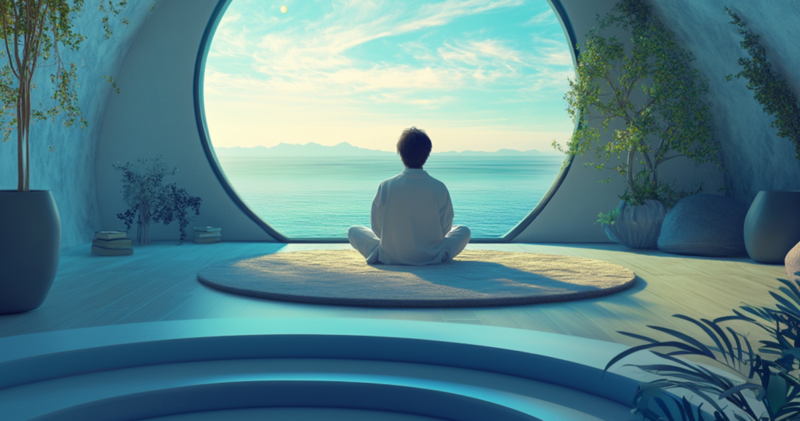In this article:
- The Science of Visuals and the Human Brain
- Colors: More Than Just Aesthetic Choices
- The Shapes and Layouts That Soothe
- Storytelling Through Visuals: The Emotional Bridge
- Visual Communication in Therapeutic Settings
- Conclusion
Visual communication, often celebrated for its power to convey messages quickly, can also play a critical role in promoting well-being. How does this happen? Is it about color? Structure? Or maybe the harmony between shapes? The answers are more layered than they may initially seem, threading together psychology, design, and human biology.
The Science of Visuals and the Human Brain
Let’s start with biology. It’s known that nearly half of the human brain is involved in visual processing. What this means is that our brains are naturally attuned to images, colors, and patterns. Visual stimuli can affect the mind faster than words—our brains process images 60,000 times faster than text, according to a study by 3M Corporation.
So, when we see an image, our brain doesn’t just see a static picture; it responds. There’s emotion, interpretation, and often, well-being is influenced. Think about this: Have you ever felt calmer after staring at a serene landscape painting or a photo of the ocean?
Colors: More Than Just Aesthetic Choices
Colors are probably the most talked-about aspect of visual communication when it comes to well-being. And for good reason. Colors can sway our feelings without us even realizing it. Consider blue. Associated with calmness, reliability, and serenity, blue is often used in hospitals, spas, and meditation spaces to promote a sense of peace.
There’s a statistic from a study in the Journal of Environmental Psychology that found participants working in blue-colored environments reported a 23% higher level of satisfaction than those in spaces with red hues. It’s clear that color is not merely cosmetic; it’s influential. But what about other colors? Yellow can uplift, sparking joy and creativity. On the flip side, gray can dampen moods, evoking feelings of gloom.
Whatever event, service or product you are promoting, freedom of interaction are the basics. You should download VPN apps on iOS not only for personal privacy reasons, but also to ensure the security of corporate and customer data. It doesn’t take much to protect your search activity from hackers, surveillance and advertising giants. Usually, using VeePN VPN apps in combination with DuckDuckGo – an anonymous search engine is sufficient security.
The Shapes and Layouts That Soothe
Shapes and patterns also impact our mental state. Soft, curving lines tend to relax the mind, while sharp angles might trigger feelings of anxiety. This is why nature-inspired designs, which mimic organic shapes found in the environment—like leaves, waves, or clouds—often appear in well-being-focused design strategies.

Get 300+ Fonts for FREE
Enter your email to download our 100% free "Font Lover's Bundle". For commercial & personal use. No royalties. No fees. No attribution. 100% free to use anywhere.
Design psychologists have identified that geometric layouts, symmetry, and balanced structures can foster feelings of safety and control. A sense of structure gives the brain a break from chaos. Imagine being in a cluttered room versus a well-organized one. Your mind feels less overwhelmed in the latter. Symmetry, particularly, has a subconscious impact on the perception of order. A study published by the American Psychological Association showed that symmetrical environments improved participants’ ability to focus and stay calm by up to 15%.
Storytelling Through Visuals: The Emotional Bridge
Let’s not forget storytelling. When we look at a visual narrative—say, a series of photos documenting someone’s journey of personal growth—there’s a psychological shift that happens. We resonate with the emotions being portrayed. Seeing someone overcoming adversity, experiencing joy, or connecting with nature can inspire similar emotions in ourselves.
Visual storytelling builds empathy, a crucial component of emotional well-being. It acts as a mirror, reflecting our own thoughts, feelings, and experiences, often making us feel more understood or connected. Whether it’s an advertisement, social media post, or even a comic strip, the emotional resonance is real and measurable.
Visual Communication in Therapeutic Settings
Interestingly, visual communication is being increasingly incorporated into therapeutic practices. Art therapy, for example, utilizes the creation and interpretation of images to help individuals process emotions, deal with trauma, or express thoughts they struggle to verbalize. A review of clinical studies on art therapy published in the Journal of Clinical Psychology revealed that 79% of participants reported lower levels of anxiety and higher levels of emotional clarity after engaging with visual arts.
Even outside of structured therapy, simply observing certain visuals can have therapeutic effects. Advice – use VeePN and enjoy the freedom and pleasant images. Images of nature, particularly, have been found to reduce stress levels. Research from the University of Exeter indicated that people who spent time looking at images of green spaces and natural landscapes experienced a reduction in their cortisol levels (the stress hormone) by an average of 12%.
Conclusion
Visual communication, while often discussed in marketing and design, holds power far beyond aesthetic value. Its capacity to influence mental states, from relaxation to stress relief, makes it a crucial tool for fostering well-being. Whether through calming colors, soothing shapes, therapeutic images, or empathetic storytelling, the way we see can transform how we feel.
The next time you choose the images, colors, or designs to surround yourself with, remember: your eyes are not just passive receptors. They’re connected to your mind, your emotions, your well-being. Make them count.

